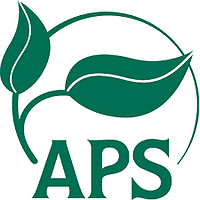Citrus reticulata (mandarin) is an economically important fruit in Korea, with Jeju Island accounting for over 90% of the local production (Park et al. 2019). In July 2021, one leaf each from 12 individual mandarin (Citrus reticulata) tree presenting viral disease-like symptoms (chlorotic blotching, yellowing and mosaic) were collected from Namwon-eup, Seogwipo-si, Jeju Island to determine the presence and severity of infection. Based on different symptoms on collected 12 leaves, three samples (samples #1, #6 and #7) were selected for high throughput sequencing (HTS) analysis. Total RNA was extracted from each sample using the NucleoSpin RNA Plant Kit (Macherey-Nagel, Duren, Germany) according to the standard protocol. The Illumina TruSeq Stranded mRNA Library Preparation protocol was followed to generate cDNA libraries. HTS was performed using the Illumina Novaseq 6000 platform by Macrogen Inc. (Seoul, South Korea). A total of 106,072,022 (sample #1), 109,761,956 (sample #6) and 132,284,268 (sample #7) raw reads (average length 101 bp) were generated by HTS. The HTS data was analyzed using the "trim reads" and "map reads to reference" tools built in CLC Genomics Workbench software (Qiagen Bioinformatics, Hilden, Germany). All the virus related sequence reads were mapped to the citrus tristeza virus (CTV), citrus leaf blotch virus (CLBV) and citrus leaf blotch virus 2 (CLBV 2). CTV and CLBV was detected in all the three samples. However, CLBV 2 was detected only in sample #6, which showed symptoms of chlorotic blotching in leaves. A total of 1,677,131 reads were identified for CLBV 2. CLBV 2 was first reported in Haruka (C. junos * C. grandis) in China (Cao et al. 2018). A viral genome sequence was assembled by mapping the Illumina reads to the Reference Viral DataBase (RVDB) (June 2021) (Goodacre at al., 2018). The resultant CLBV 2 (GenBank accession number OL871235) was 8,692 nt long and shared more than 99% nucleotide and amino acid identity to CLBV 2 CN-2 isolate (MH558590). RT-PCR was used for further validation with 12 collected samples. Viral RNA was extracted using the Viral Gene-spin Viral DNA/RNA Extraction Kit (iNtRON Biotechnology, Seongnam, Korea). Two primer pairs, namely CLBV2-1-F (5'-TCATCCAGAAGGGTATCTCGGA-3')/CLBV2-1-R (5'-CCCTCCTCACCTTCCCCATA-3') and CLBV2-2-F (5'-GGGTCAAGAAGCACGTCAGA-3')/CLBV2-2-R(5'-CGTTCCACATCCATTGAAGGAC-3'), were designed based on the previously assembled sequence (OL871235), and a 588 bp fragment encoding a partial replicase protein and a 780 bp fragment encoding a partial coat protein were successfully amplified from sample #6. The amplification products were cloned into the pGEM-T Easy vector (Promega, Madison, WI, USA), plasmid DNA was isolated and sequenced in both direction by Macrogen Inc. The obtained sequences shared 99.87-100% identity with HTS assembled sequence and 99.15-99.49% identity with CLBV 2 CN-2 (MH558590). However, CLBV 2 was not identified in the remaining 11 samples. To the best of our knowledge, this is the first report of CLBV 2 in Korea in mandarin in mixed infection with CTV and CLBV.

First Report of Citrus Leaf Blotch Virus 2 in Mandarin (Citrus reticulata) in Jeju Island, Korea
Review badges
0 pre-pub reviews
0 post-pub reviews
